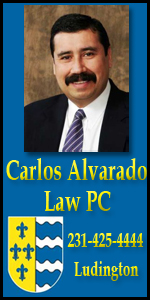The Mitten Memo. A blog by Nick Krieger.
Yesterday, the United States of America celebrated its 239th birthday. Did you watch the parade and fireworks? We all know that the Fourth of July is the day when we celebrate our nation’s independence from Great Britain, right?
Well, sort of. The events of July 4, 1776, were neither the beginning nor the end of America’s struggle for independence. By the time the Declaration of Independence was adopted, delegates from the thirteen colonies had already been meeting for two years to debate what actions, if any, should be taken against Great Britain’s ever-increasing taxation, micromanagement, and control of commerce and government on the American continent.
The First Continental Congress met in Philadelphia in 1774 to develop a response to the Intolerable Acts, which Parliament had enacted in the wake of the Boston Tea Party. The Intolerable Acts closed Boston’s harbor to trade and commercial shipping, altered the form of government throughout Massachusetts, and imposed direct rule over the people of Boston by British officials. In the fall of 1774, the First Continental Congress petitioned the British Crown to repeal the Intolerable Acts and adopted a policy of boycotting British goods. However, King George III and Parliament never officially responded to the colonists’ petition.
The following April, military hostilities began with skirmishing between British troops and colonial militiamen at Lexington and Concord. Twelve of the thirteen colonies agreed to send delegates to a Second Continental Congress, to be convened in Philadelphia in May 1775. The thirteenth colony, Georgia, ultimately selected delegates who arrived in Philadelphia later that summer. The delegates elected John Hancock of Massachusetts to serve as their president and quickly began debating whether to establish a standing army.
By mid-June, the Second Continental Congress had established the Continental Army and had appointed George Washington of Virginia to serve as its commanding general. Colonial forces again met British troops at the Battle of Bunker Hill, just outside the city of Boston, on June 17, 1775.
The Second Continental Congress made one last push for reconciliation with Great Britain when it sent the Olive Branch Petition to the British Crown in July 1775. But by the time the British Crown received the Olive Branch Petition, it had already been notified of the military engagement at Bunker Hill. In August, King George III declared that the thirteen colonies were in a state of open rebellion and ordered all loyal British subjects on the American continent “to use their utmost endeavours to withstand and suppress such rebellion.”
That winter, Thomas Paine published his pamphlet Common Sense, in which he detailed the ongoing dispute between the thirteen colonies and the British government. Paine argued that full independence from Great Britain was the only true course for achieving liberty and prosperity. Tens of thousands of copies of Common Sense were sold during the late winter and spring of 1776, and many influential colonists who had previously remained undecided about independence began to change their minds. Meanwhile, Parliament had enacted the Prohibitory Act, establishing a naval blockade of American ports and declaring colonial ships to be enemy vessels. Public opinion in the colonies was turning in favor of independence.
Between April and June, numerous declarations were passed in towns and cities throughout the thirteen colonies urging the Continental Congress to vote in favor of independence. In April, North Carolina’s government officially authorized its delegates to vote for independence. In May, Rhode Island declared its independence from the British Crown. Colonial sentiment against the British government was reaching the boiling point.
On June 7, Richard Henry Lee of Virginia presented a motion calling for the Second Continental Congress to formally declare independence. Although Lee’s motion was not immediately successful, the Continental Congress did appoint the Committee of Five—consisting of John Adams, Benjamin Franklin, Thomas Jefferson, Robert Livingston, and Roger Sherman—to draft a proposed declaration of independence.
At the urging of Adams, the committee selected Jefferson to write the document, and a rough draft was presented to the Continental Congress on June 28. Debate began, and a preliminary vote was conducted on July 1. Only nine colonies initially supported the proposed declaration. On the next day, however, delegates from three of the colonies changed their position. On July 2, the Second Continental Congress approved a draft of the declaration of independence by a vote of 12-0-1 (the New York delegates abstained). As has been recounted many times, John Adams predicted that Americans would forever celebrate July 2 as Independence Day.
The declaration, though approved in preliminary form, was still not finalized. The Continental Congress made several additional revisions and alterations to the document in the ensuing two days. The Declaration of Independence, as we know it today, was adopted in final form, engrossed, and sent to the printer on July 4. Copies of the Declaration of Independence were printed during the night and distributed across the colonies on July 5 and 6.
Despite the Continental Congress’s formal votes to sever ties with Great Britain and adopt the Declaration of Independence, there is some historical debate concerning when the document was actually signed.
Years later, Jefferson, Adams, and Franklin all wrote that the Declaration of Independence had been signed on July 4. However, the records of the Continental Congress make clear that a signing ceremony took place on August 2. To this day, it remains unclear whether the Declaration was signed on July 4 and the formal ceremony on August 2 was just a formality; whether Jefferson, Adams, and Franklin were mistaken in their recollection and the Declaration was actually signed on August 2; or whether two different copies of the Declaration were signed at two different times.
The war, itself, did not break out in earnest until after the Declaration of Independence was adopted. It raged on the American Continent for more than five years, until early 1782 (although Cornwallis had surrendered his main force at Yorktown in October 1781).
In April 1782, the British Parliament voted to end the war in America. The war did not formally end until the Treaty of Paris was signed on September 3, 1783. The Continental Congress (which had become known as the Congress of Confederation under the Articles of Confederation) ratified the Treaty of Paris on January 14, 1784.
There are several different days on which we could celebrate and commemorate our nation’s independence from Great Britain. For instance, we could celebrate on July 2 as John Adams once predicted we would. We could celebrate on August 2, the anniversary of the formal signing ceremony. We could celebrate on September 3, the anniversary of the Treaty of Paris, or January 14, the anniversary of the ratification of that treaty. And yes, it is also appropriate to celebrate on July 4.
The specific date of the celebration is not what’s important. Our predecessors settled on July 4 many years ago, and we are stuck with that date—whether truly historically significant or not.
What is important is that we remember the enormous personal sacrifices that America’s founders made during the Revolution. They committed the ultimate act of treason, with each man placing his life and family in grave jeopardy. However, they did so for a high and noble purpose. There would certainly be growing pains under the Articles of Confederation. And yes, a new Constitution and Bill of Rights would ultimately be necessary. But the toothless, politically insignificant union of thirteen free and independent states that our founders created on the edge of the civilized world so long ago would eventually become the most powerful and prosperous nation in the world. Celebrate every day as if it were Independence Day. And let’s hope that America—the greatest experiment in liberty and representative democracy on Earth—continues to flourish for another 239 years.
Nick Krieger is a graduate of Ludington High School, earned a bachelor’s degree from Michigan State University, and holds a law degree and master’s degree from Wayne State University Law School. Nick works as an attorney for the Michigan Court of Appeals and owns a home in Ludington. The viewpoints expressed in The Mitten Memo are Nick’s own, and do not reflect the views of the Michigan Court of Appeals or Media Group 31, LLC and its affiliates: Mason County Press, Manistee County Press and Oceana County Press. Contact Nick via e-mail atnickkrieger77@gmail.com or follow him on Twitter at @nckrieger.














.jpg)



















 (1).gif)












.png)






